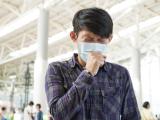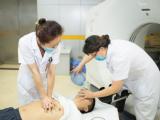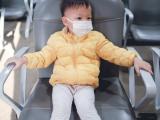May 22, 2003 (CIDRAP News) – A hospital laundry worker in Taiwan who was sick for 6 days before he was recognized as having SARS (severe acute respiratory syndrome) may have exposed more than 10,000 people to the disease and helped derail Taiwan's previously effective containment effort, according to US health officials.
The 42-year-old man kept working and mingling with many hospital patients, staff, and visitors for 3 days after his symptoms appeared Apr 12, the Centers for Disease Control and Prevention (CDC) reports in the May 23 issue of Morbidity and Mortality Weekly Report (MMWR). The disease wasn't diagnosed until 3 days after he was hospitalized. The man died Apr 29.
"Because the index patient had been symptomatic for 6 days before SARS was diagnosed, the number of potentially exposed persons was estimated at 10,000 patients and visitors and 930 staff," the report says.
Because of the fast-spreading SARS outbreak in Taiwan, the CDC has sent experts there to help in the containment effort. The agency announced today that one of them, a medical epidemiologist who was not named, has contracted possible SARS and will be flown home. Three other CDC employees who have been working with the man are in quarantine and will be flown home on the same air ambulance flight, CDC Director Julie Gerberding said at a press briefing this afternoon.
"We've arranged for an air ambulance to transport him back to an Atlanta hospital in the next few hours," Gerberding said. "He'll be home sometime this weekend." She said it is not known whether his illness is actually SARS or how he contracted it.
The MMWR report suggests that the laundry worker's case played an important role in spreading SARS in Taiwan. Between Mar 14 and Apr 21, the island had only 28 probable SARS cases, most of them in business travelers and their close contacts, the report says. Since Apr 21, the case count has climbed steeply, and most of the spread has been in healthcare settings. Between Apr 22 and May 1, the case count jumped to 89, and as of today the country has 483 cases, including 60 deaths.
A total of 137 probable SARS cases have been linked with exposures at "hospital A," where the laundry worker was employed, the report says. A third of those cases were in healthcare workers, and 26 people died. In addition, clusters of SARS cases in workers at eight other hospitals have been traced to the initial outbreak at hospital A.
The laundry worker first became ill with fever and diarrhea and was examined in the hospital emergency department (ED) Apr 12, 14, and 15, the CDC reports. Besides continuing to work during that time, he slept in the hospital's basement and "spent off-duty time socializing in the ED." Because of worsening symptoms, he was admitted to a ward Apr 16 with a diagnosis of infectious enteritis. His fever abated after antibiotic treatment, but on Apr 18 he became short of breath and was transferred to intensive care for possible SARS. He suffered respiratory failure Apr 22 and died a week later.
A cluster of cases involving patients, visitors, and healthcare workers was reported at hospital A on Apr 22. The next day an emergency task force was convened, and on Apr 24 the hospital was sealed, with all patients, visitors, and staff members quarantined inside. Since then, SARS has spread to many parts of Taiwan and several other hospitals; four hospitals have suspended routine services.
In response, the government has designated special SARS hospitals, set up about 100 fever clinics to identify potential SARS patients, begun building 1,000 more isolation rooms, and identified camps and military facilities as quarantine sites, the report says.
Gerberding said the ill CDC worker in Taiwan has been there only a few days, advising hospitals on infection control measures. He is an infection control expert who "was observed to be highly compliant with" the recommended precautions, she said. He first experienced a low-grade fever Monday, May 19, and spent a day in his hotel room under another CDC worker's supervision. By the next afternoon his fever was gone and he felt well, so the next morning he left his room for breakfast and to work in the hotel business center, she said. But his fever later returned, accompanied by a cough, so he was hospitalized in an isolation room.
The CDC decided to bring the man home because the healthcare system in Taiwan "is under enormous stress" and because of his own wish to be treated at home, Gerberding said. She explained that he will be flown on a medically equipped charter plane. She said the patient does not need ventilatory support or extra oxygen, and his fever is controlled with aspirin.
Gerberding said the CDC still has other personnel in Taiwan, and a new team will be arriving soon to replace the people who are coming home.
The World Health Organization (WHO) today reported a cumulative global total of 8,046 SARS cases, with 682 deaths. The latest deaths included eight in Taiwan, four in China, three in Hong Kong, and one in Singapore. The US count is 65 probable cases.
In other recent SARS developments:
- The CDC updated its clinical case definition this week by (1) adding epidemiologic criteria for travel exposure to specify dates of illness onset for each area, and (2) setting interim criteria for excluding previously reported cases.
- Health experts at a Senate committee hearing yesterday warned that the disease, now waning in North America, could resurge next winter.
- The WHO, which previously warned against nonessential travel to Taiwan's capital, Taipei, extended the warning yesterday to all of Taiwan.
- The WHO removed the Philippines from the list of places with recent local transmission on May 20, after the passage of 20 days with no new cases.
- Singapore reported its first new SARS case in 20 days on Sunday, May 18, forestalling its hoped-for removal from the list of places with recent local transmission.
- The WHO said today that transmission of SARS has occurred on only four airline flights, most recently on Mar 23, though there have been 31 other flights that carried people with symptomatic cases.
See also:
WHO SARS site
http://www.who.int/csr/sars/en/
CDC SARS site
http://www.cdc.gov/ncidod/sars/



















